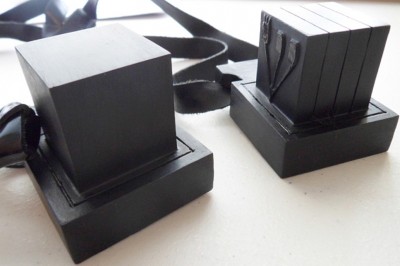
Halacha clearly forbids speaking after reciting the Bracha over Tefillin Shel Yad, until one has completed placing the Tefillin Shel Rosh on his head. In fact, while putting on Tefillin one may not even answer "Amen" to a Bracha or to Kaddish. Rav Chaim Palachi in his work Kaf HaChaim, rules that this applies even if one hears somebody else reciting the Bracha over Tefillin. Meaning, if a person recited the Bracha of Tefillin, and before he finishes putting on his Tefillin Shel Rosh he hears the person next to him recite the Bracha on Tefillin, he should not answer "Amen." Even though the Bracha he heard relates to the Mitzvah of Tefillin, answering "Amen" would nevertheless constitute an interruption in his placing of Tefillin and is therefore forbidden. Rav Chaim Palachi adds, however, that if one mistakenly answered "Amen" to the Bracha recited over Tefillin, then he does not have to repeat the Bracha over Tefillin. Since he answered "Amen" to a Bracha having to do with Tefillin, he has not invalidated his Bracha, and he may therefore continue putting on his Tefillin Shel Rosh. Chacham Ovadia Yosef applies this ruling to any situation where a person mistakenly answered "Amen" in between the Tefillin Shel Yad and Tefillin Shel Rosh. In all such cases, even though one acted incorrectly by answering "Amen" and interrupting in between the Tefillin Shel Yad and Tefillin Shel Rosh, he nevertheless does not invalidate his Bracha. Chacham Ovadia notes that the authorities debate the question of whether one must repeat the Bracha over Tefillin in this case, and we therefore apply the rule of "Safek Brachot Le’hakel," which means that we do not recite a Bracha in a situation of uncertainty. In addition to speaking, Halacha also forbids silently gesturing with one’s hands before putting on the Tefillin Shel Rosh. Rav Chaim Palachi maintains that this prohibition applies even to gesturing "Le’sorech Mitzvah" – for the purpose of a Mitzvah. Chacham Ovadia Yosef, however, disagrees, and allows silently gesturing in between the Tefillin Shel Yad and Tefillin Shel Rosh when this is necessary for the purpose of a Mitzvah. Thus, for example, if a person is approached by somebody collecting Tzedakah while he puts on his Tefillin, he may silently gesture to the person to wait so that he can give him a donation. For personal matters, however, one certainly may not gesture – even silently – while he puts on his Tefillin, until he has finished placing the Tefillin Shel Rosh on his head.
Summary: Once one has recited the Bracha over his Tefillin Shel Yad, he may not speak, answer "Amen" or even gesture silently until after he finishes placing his Tefillin Shel Rosh. It is permissible, however, to silently gesture for the purpose of a Mitzvah. If one mistakenly recited "Amen" to a Bracha or Kaddish while putting on Tefillin, he is not required to repeat the Bracha on his Tefillin.
By Rabbi Eli Mansour
Speaking, Answering “Amen” and Gesturing While Putting On Tefillin
Typography
- Smaller Small Medium Big Bigger
- Default Helvetica Segoe Georgia Times
- Reading Mode




